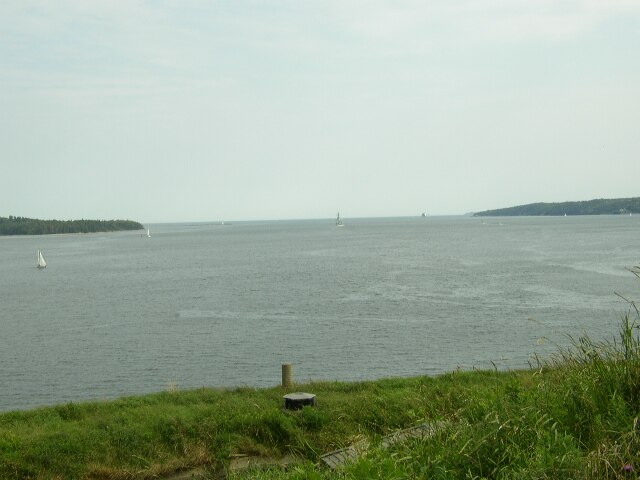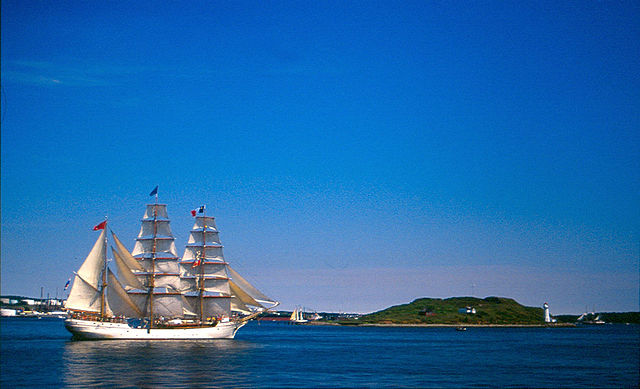Halifax Harbour is a large natural harbour on the Atlantic coast of Nova Scotia, Canada, located in the Halifax Regional Municipality. Halifax largely owes its existence to the harbour, being one of the largest and deepest ice-free natural harbours in the world. Before Confederation it was one of the most important commercial ports on the Atlantic seaboard. In 1917, it was the site of the world's largest man-made accidental explosion, when the SS Mont-Blanc blew up in the Halifax Explosion of December 6.
Nautical chart of Halifax Harbour in the 1880s
Entrance to Halifax Harbour as seen from Georges Island
Sambro Island from the northwest
The barque Europa beside Georges Island in Halifax Harbour in 2004
A harbor, or harbour, is a sheltered body of water where ships, boats, and barges can be moored. The term harbor is often used interchangeably with port, which is a man-made facility built for loading and unloading vessels and dropping off and picking up passengers. Harbors usually include one or more ports. Alexandria Port in Egypt is an example of a harbor with two ports.
New York Harbor and the Hudson River in the foreground; the East River in the background.
Capri harbor, Italy seen from Anacapri
Koyilandy Harbour, Kerala, India
The tiny harbor at the village of Clovelly, Devon, England








